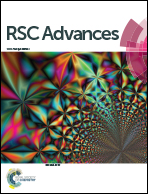Possibility of controlling the conduction mechanism by choosing a specific doping element in a praseodymium manganite system
Abstract
Electrical properties of Pr0.7Ca0.3Mn0.9X0.1O3 (X = Co, Ni, Cr and Fe) systems have been investigated using impedance spectroscopy measurements. The reported results confirmed the role of cationic disorder on the transport properties of the doped Pr0.7Ca0.3MnO3 system. For the case of the substitution by Co and Ni and Fe transition metals, the lower temperature side has been marked by the activation of the hopping conductivity over the nearest sites. Moreover, the Shklovskii–Efros-variable range hopping conductivity mechanism has been observed in the case of the substitution by Cr element. In the high temperature range, the evolution of the resistance with temperature confirmed the activation of a hopping process. In such a temperature range, the conduction process of all the studied compounds is dominated by a thermally activated small polaron hopping mechanism. For the Pr0.7Ca0.3Mn0.9Cr0.1O3 compound, AC studies have confirmed that the electrical conductance should be investigated in terms of an activated quantum mechanical tunneling process. At higher frequencies, the Pr0.7Ca0.3Mn0.9Fe0.1O3 compound is characterized by the existence of a high frequency plateau. For the Pr0.7Ca0.3Mn0.9Fe0.1O3 ceramic, the dispersive region of the spectrum has confirmed the activation of the correlated barrier hopping mechanism. Thus, the conductance is found to follow the double Jonscher power law only for the temperature range of [80 K, 200 K]. For the Pr0.7Ca0.3Mn0.9Ni0.1O3 compound, the evolution of the frequency exponent has confirmed the activation of two conduction mechanisms. The non small polaron tunneling mechanism was activated at lower temperatures. Accordingly, the activation of the correlated barrier hopping mechanism was detected for the high temperature range. For Pr0.7Ca0.3Mn0.9Co0.1O3 manganite, the coexistence of two conduction mechanisms (correlated barrier hopping and the non small polaron tunneling) is noticed. The latter's were activated in the whole of the explored temperature range. Using the scaling model, the spectra of both Pr0.7Ca0.3Mn0.9Cr0.1O3 and Pr0.7Ca0.3Mn0.9Ni0.1O3 compounds merge into a single master curve, which confirms the validity of the time temperature superposition principle.



 Please wait while we load your content...
Please wait while we load your content...